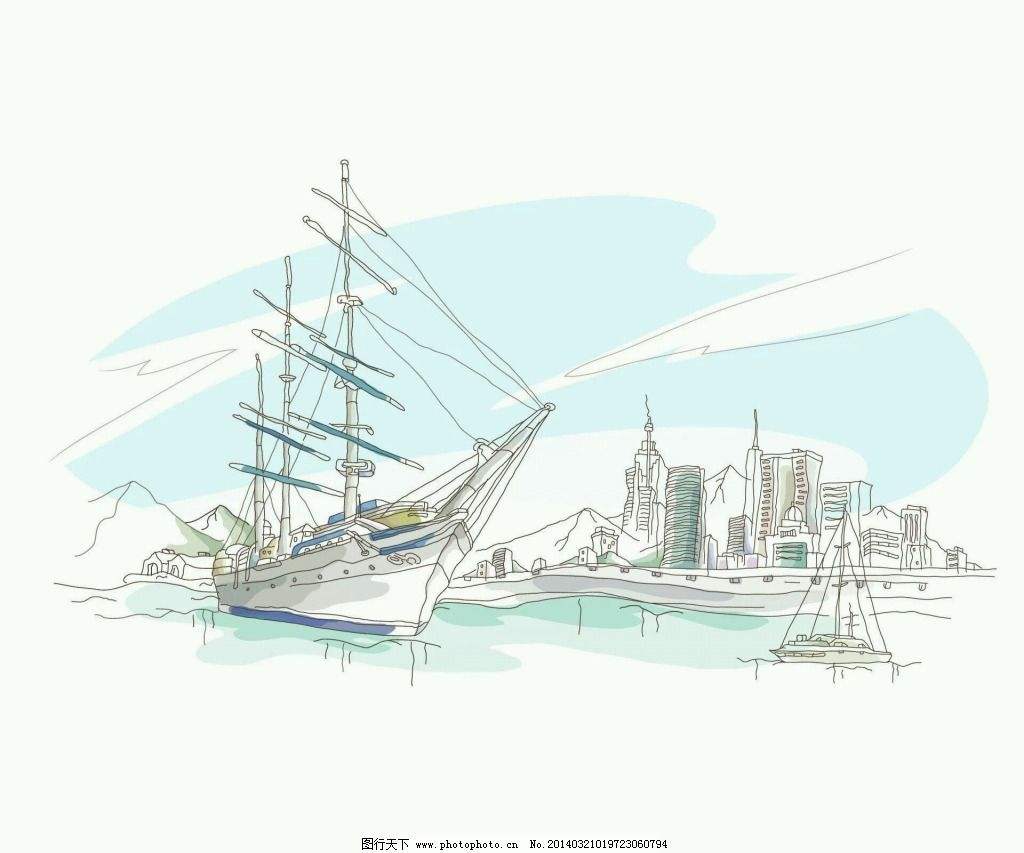
当前课程知识点:Introduction of New Structural Regional Economics > 7. A Demonstration of China's Development Achievements > 7.2 Growth Identification and Industrial Policy: Jilin Revitalization > 7.2 Growth Identification and Industrial Policy: Jilin Revitalization
返回《Introduction of New Structural Regional Economics》慕课在线视频课程列表
返回《Introduction of New Structural Regional Economics》慕课在线视频列表
欢迎大家继续学习
新结构区域经济学导论
我们继续学习第七章第二节内容
本节课
我们将以中国吉林省经济振兴为例
学习
新结构区域经济学的
增长甄别与产业政策
产业政策
对区域经济发展至关重要
这也是新结构区域经济学
关注的重点问题
如何针对区域比较优势
制定合理的产业政策
来促进区域经济发展呢
让我们一起来尝试解答
这幅图展示了吉林省的具体位置
吉林省是中国东北地区偏中部的重要省份
是中国重要的粮食生产基地之一
也是中国重要的工业基地
吉林省在中国的地位
主要表现为
首先是行政区面积大约占全国的2%
人口数量占全国的2%
目前吉林省的GDP
也接近全国的2%
因此吉林省的禀赋结构
及其比较优势
一定是多维度和多层次的
从发展阶段来看
吉林省目前的经济总量
与新西兰大致相当
人均收入水平
与非洲的加蓬大致相当
2015年吉林省的人均收入
达到8325美元左右
排在中国所有省的第12位
与全国平均收入水平相当
但与国内其他省份相比
差距很大 比如
吉林省人均收入仅相当于
江苏省的59% 浙江省的65%
在增长潜力方面
吉林省与世界和国内的前沿
还有较大的差距
这也意味着整体上
产业升级与技术进步的后发优势
仍然有很大的提升空间
与吉林省处于同等发展阶段的
湖北省和重庆市
实现了高速增长
例如 2015年吉林省的人均GDP
与湖北省和重庆市相当
但2016年湖北省的GDP增长率为8.1%
重庆市GDP增长率为10.7%
而吉林省只有6.9%
这说明
即便是已处于同一发展水平的
湖北省和重庆市为参照
吉林省目前完全可能
挖掘出1.2%~3.8%的
新增长点
进一步 我们来看吉林省
发展面临的问题
首先是结构问题最为突出
吉林省有丰富的自然资源 劳动力
人力资本和物质资本禀赋
产业体系全面
吉林省经济增长速度下滑
主要表现为第二产业
尤其是工业制造业
更进一步 工业增长大幅下滑
又主要表现为重工业
而更为严重的是
吉林省的重工业比例
远超轻工业
导致整体经济下滑严重
2016 年规模以上
工业增加值中
重工业实现增加值远超 4000 亿
而轻工业实现增加值
不足 2000 亿
其次
吉林省的体制机制问题突出
吉林省轻重工业结构扭曲
带来严重的并发症
比如就业岗位上劳动力流失严重
出口严重不足
产业集群中的企业数目较少
国企效率低下
体制机制扭曲
难以激活民营经济的活力
而资本密集型
重工业主导的产业结构
导致吉林省
有工业无就业
发展战略违背比较优势
那么如何破解上述问题呢
Lin和 Monga在2011年首次提出
“增长甄别与因势利导”(GIFF)的操作工具
基于广大发展中经济体政策
以及战后实践的成败经验
基于GIFF 可以为吉林省
经济结构转型升级提供技术路线
具体过程如下
第1步 各个地方政府可以确定
一份可贸易商品和服务的清单
第2步
分析本地的民营企业
在哪些产业已经比较活跃
并检查哪些基础设施与制度安排障碍
阻碍了这些企业提升产品质量
或阻碍其他企业加入
以形成具有竞争优势的产业集群
第3步
有针对性的
解决基础设施或制度环境问题
第4步
利用本地区的特殊资源禀赋
或全球以及全国范围的技术突破
带来新机遇
第5步
在无法全区域全面改善基础设施
和商业环境的情况下
可以集中资源
设立经济特区或产业园区
来克服民营企业进入
和外国投资
软硬基础设施障碍
第6 给予目标产业的领先企业
一定时限的税收优惠
和贷款优惠 提供产业引导基金
或者授予外汇额度
以进口技术设备的支持
充分运用
追赶型产业 领先型产业
转进型产业
换道超车型产业
战略型产业等
5类产业因势利导方法
发挥吉林省经济结构转型升级的长处
首先是追赶型产业
吉林省各级政府
在资金融通和外汇获取上
支持所在地的合适企业到海外
和其他地方并购
同类产业中
拥有先进技术的企业
作为技术创新产业升级的来源
其次是领先型产业
可以鼓励有条件的领先型企业
设立创新中心
和大学研究机构或科研院所合作
攻关新技术 新产品
例如与吉林大学合作
采取
产学研相结合的方式
此外 给予相关企业
到海外拓展提供
人才培训 资金 法律服务支持
三是转进型产业
该类型产业可以
以直接投资的方式
将剩余产能转移到一带一路沿线国家
以及基础投资需求大的
发展中国家
这既可使这些企业摆脱困境
又可以帮助发展中国家发展
是一种双赢的选择
四是换道超车型产业
吉林省尤其是
高校集中的长春市
可以针对这类企业发展的需要
提供孵化基地
加强知识产权保护
鼓励风险投资
制定优惠的人才政策和税收政策
支持创新性人才创业
利用国内的优势
推动换道超车型产业
在吉林省的发展
五是
战略型产业
吉林省拥有一批军工产业
政府可以引导吉林省航空 航天等产业
本地化融合
本地企业可以选择性发展
符合吉林省比较优势的
国家战略型新兴产业
同时 政府需要改善
基础设施 子女教育
生活环境等
软硬条件
为引进人才提供支持
最后
这是本节课的参考文献
好 以上就是我们
对新结构区域产业政策的介绍
希望通过
吉林省经济振兴的产业政策案例
大家可以更好的理解
新结构区域经济学增长甄别
与因势利导分析方法
本节课就到这里 谢谢大家
-1.1.1 China's Physical Geography
--1.1.1 China's Physical Geography
--1.1.1 Test
-1.1.2 Hu Line
--1.1.2 Test
-1.1.3 Economic catch-up of the central and western China
--1.1.3 Economic catch-up of the central and western China
--1.1.3 Test
-1.2.1 Overview of China’s economy
--1.2.1 Overview of China’s economy
--1.2.1 Test
-1.2.2 Coastal special economic zones in China
--1.2.2 Coastal special economic zones in China
--1.2.2 Test
-1.2.3 Western Development strategy in China
--1.2.3 Western Development strategy in China
--1.2.3 Test
-1.2.4 Northeast China Revitalization Plan
--1.2.4 Northeast China Revitalization Plan
--1.2.4 Test
-1.2.5 Rise of Central China Plan
--1.2.5 Rise of Central China Plan
--1.2.5 Test
-1.3.1 Coordinated regional development and main functional area
--1.3.1 Coordinated regional development and main functional area
--1.3.1 Test
-1.3.2 China’s urban agglomeration pattern and the economic effect
--1.3.2 China’s urban agglomeration pattern and the economic effect
--1.3.2 Test
-2.1 Agricultural location theory
--2.1 Agricultural location theory
--2.1 Test
-2.2 Growth Pole Theory
--2.2 Test
-2.3 The Stages of Economic Growth
--2.3 The Stages of Economic Growth
--2.3 Test
-2.4 Pole & Axis System Theory
--2.4 Pole & Axis System Theory
--2.4 Test
-2.5 Center-periphery theory
--2.5 Test
-3.1 Why New Structural Economics
--3.1 Why New Structural Economics
--3.1 Test
-3.2 The Theoretical Foundation of New Structural Economics
--3.2 The Theoretical Foundation of New Structural Economics
--3.2 Test
-3.3 Does New Structural Economics Offer Explanations?
--3.3 Does New Structural Economics Offer Explanations?
--3.3 Test
-3.4 Application for Industrial Policy
--3.4 Application for Industrial Policy
--3.4 Test
-3.5 Does the idea of New Structural Economics work?
--3.5 Does the idea of New Structural Economics work?
-4.1 Regional Externality
--4.1 Test
-4.2 Endowment Structure Transformation
--4.2 Endowment Structure Transformation
--4.2 Test
-4.3 Role Boundary of Facilitating Government
--4.3 Role Boundary of Facilitating Government
--4.3 Test
-4.4 Spatial Optimal Equilibrium
--4.4 Spatial Optimal Equilibrium
--4.4 Test
-4.5 Evolution of Dynamic Spiral
--4.5 Evolution of Dynamic Spiral
--4.5 Test
-5.1 China's Development Experience and OFDI
--5.1 China's Development Experience and OFDI
--5.1 Test
-5.2 Commonness and New Trends of Developing Countries
--5.2 Commonness and New Trends of Developing Countries
--5.2 Test
-5.3 Industrialization of Developing Countries with Special Economic Zones
--5.3 Industrialization of Developing Countries with Special Economic Zones
--5.3 Test
-5.4 Growth Identification and Facilitation Framework (GIFF)
--5.4 Growth Identification and Facilitation Framework (GIFF)
--5.4 Test
-5.5 GIFF in Practice and Case Studies (Nigeria, Benin and Uzbekistan)
--5.5 GIFF in Practice and Case Studies (Nigeria, Benin and Uzbekistan)
--5.5 Test
- 6.1.1 The global competitiveness model and its theoretical basis
-- 6.1.1 The global competitiveness model and its theoretical basis
--6.1.1 Test
- 6.1.2 The Brief introduction of the Theory of County Economic Competitiveness
-- 6.1.2 The Brief introduction of the Theory of County Economic Competitiveness
--6.1.2 Test
- 6.2.1 Situation of the Chinese Counties: Development Stage、Location Characteristics and Natural Res
-- 6.2.1 Situation of the Chinese Counties: Development Stage、Location Characteristics and Natural Res
--6.2.1 Test
- 6.2.2 The other Situation of the Chinese Counties and The Case of Qinyuan Pencil
-- 6.2.2 The other Situation of the Chinese Counties and The Case of Qinyuan Pencil
--6.2.2 Test
- 6.2.3 The County's Development Strategy (comparative advantage) Analysis
--6.2.3 The County's Development Strategy (comparative advantage) Analysis
--6.2.3 Test
-6.2.4 The Other County's Development Strategy (comparative advantage) Analysis and Conclusion
--6.2.4 The Other County's Development Strategy (comparative advantage) Analysis and Conclusion
--6.2.4 Test
-6.3.1 The Case of Jinjiang and Guanling
--6.3.1 The Case of Jinjiang and Guanling
--6.3.1 Test
- 6.3.2 The Case of Qianyang and Changzhi
-- 6.3.2 The Case of Qianyang and Changzhi
--6.3.2 Test
- 6.3.3 The Case of Hotan
-7.1.1 Targeted Poverty Alleviation Strategy
--7.1.1 Targeted Poverty Alleviation Strategy
--7.1.1 Test
-7.1.2 Cases of the Old Revolutionary Base Areas
--7.1.2 Cases of the Old Revolutionary Base Areas
--7.1.2 Test
-7.2 Growth Identification and Industrial Policy: Jilin Revitalization
--7.2 Growth Identification and Industrial Policy: Jilin Revitalization
--7.2 Test
- 7.3.1 The Carrying Capacity of Yangtze River Economic Belt
-- 7.3.1 The Carrying Capacity of Yangtze River Economic Belt
--7.3.1 Test
- 7.3.2 The Development of Yangtze River Economic Belt
--7.3.2 The Development of Yangtze River Economic Belt
--7.3.2 Test
-7.4 Growth Identification and Facilitation: Integration of Yangtze River Delta and High-quality Deve
--7.4 Growth Identification and Facilitation: Integration of Yangtze River Delta and High-quality Deve
--7.4 Test
-Final examination

